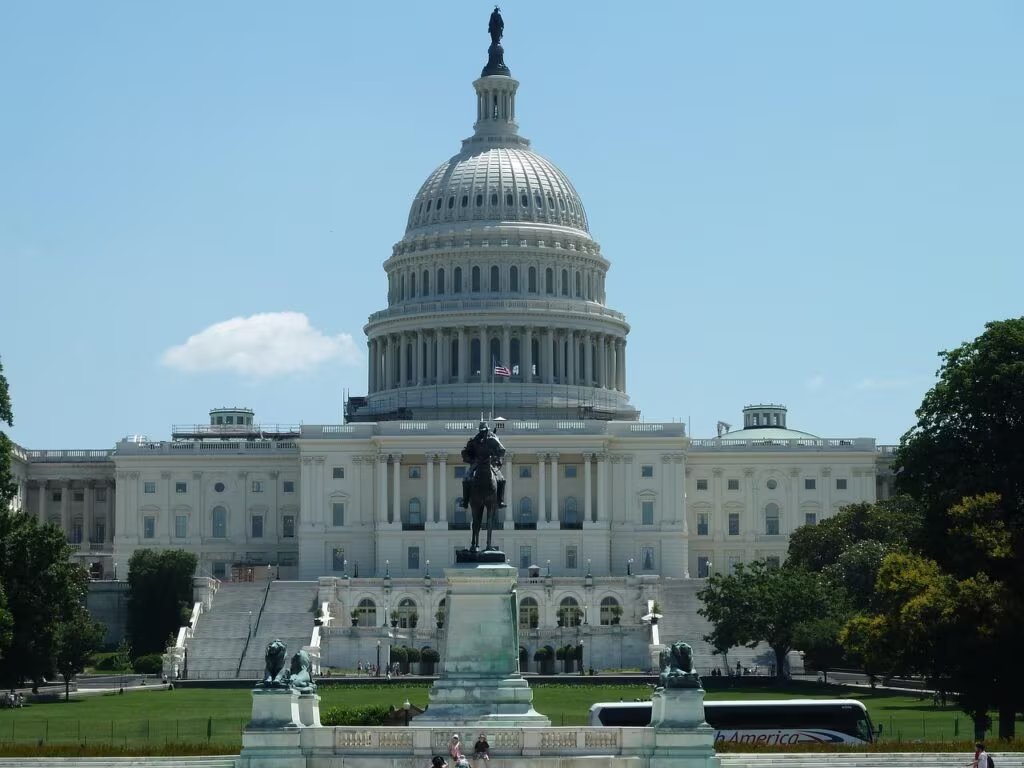The Breakthrough Vote: Senators Pave the Way to Reopen Federal Agencies
In a critical procedural move that signaled the end of a three-day impasse, the U.S. Senate advanced a measure to restore funding and immediately reopen the federal government. This action, which took place during the January 2018 shutdown, demonstrated the high-stakes political maneuvering required to break a legislative deadlock, even when one party controls both the White House and Congress.
The breakthrough came after intense negotiations between Democratic and Republican leaders, culminating in a decisive procedural vote. The Senate voted 81-18 to end debate on a short-term continuing resolution (CR), easily surpassing the 60-vote threshold required to overcome a filibuster and move the legislation forward. This vote effectively guaranteed the passage of the funding bill later that day, allowing federal agencies to resume normal operations.

The Terms of the Short-Term Deal
While the vote provided immediate relief, the agreement was not a long-term solution but a political compromise designed to defer the most contentious issues. The continuing resolution provided funding for the government only until February 8, 2018. This short timeline created a new deadline for lawmakers to address the core disagreements that caused the shutdown.
The key concession that secured Democratic support was a commitment from then-Senate Majority Leader Mitch McConnell (R-KY) to hold a debate and vote on immigration legislation, specifically addressing the fate of the Deferred Action for Childhood Arrivals (DACA) program, which protected hundreds of thousands of young undocumented immigrants.
Core Components of the Agreement:
- Funding Duration: Government funded for three weeks, expiring on February 8, 2018.
- Immigration Promise: A commitment to bring a bill addressing DACA and border security to the Senate floor for an open debate.
- Immediate Effect: Federal employees returned to work immediately, and essential services resumed.
This temporary resolution underscored the procedural challenges inherent in the Senate, where a minority can wield significant power through the filibuster, forcing the majority to seek bipartisan consensus on crucial funding measures.
The Underlying Political Stalemate: DACA and Border Security
The 2018 shutdown was fundamentally triggered by the failure to agree on immigration policy, a perennial flashpoint in U.S. politics that remains relevant today. Democrats, led by then-Senate Minority Leader Chuck Schumer (D-NY), insisted that any spending bill must include protections for DACA recipients, often referred to as ‘Dreamers.’
Republicans, meanwhile, prioritized increased border security funding and opposed linking the DACA issue directly to the government’s operational budget. The impasse demonstrated the deep ideological divide, where each side used the leverage of the funding deadline to push their respective agendas.
“We have a deal,” Senator Schumer announced following the procedural vote. “We will vote today to reopen the government.” He emphasized that the agreement was based on a “good faith commitment” from Senator McConnell to address DACA.

The Mechanics of the Shutdown
A government shutdown occurs when Congress fails to pass 12 appropriations bills or a continuing resolution (CR) to fund federal agencies before the existing funding expires. In the 2018 scenario, the failure to secure the 60 votes needed for the CR meant that non-essential government functions ceased. This included:
- Furloughing hundreds of thousands of federal employees.
- Suspending non-essential services, such as passport processing and national park maintenance.
- Continuing essential services, including military operations, air traffic control, and border protection, often with personnel working without pay.
Historical Context and Future Implications
This episode serves as a crucial case study in legislative brinkmanship. While the shutdown was brief—lasting just over 69 hours—it highlighted the fragility of the budget process and the increasing tendency to use government funding as leverage for policy demands, a trend that has persisted in subsequent budget battles.
The promise made by Senator McConnell to hold a DACA debate was instrumental in securing the Democratic votes. However, the subsequent failure to pass a permanent DACA solution in the following weeks led to further legislative crises and another brief shutdown in February 2018, demonstrating the difficulty of turning procedural promises into substantive law.
Lessons for 2025 Budget Debates
Even years later, the dynamics of the 2018 resolution offer insights into current political negotiations:
- The 60-Vote Hurdle: The necessity of bipartisan support in the Senate for appropriations bills remains the primary driver of compromise, regardless of which party holds the majority.
- Policy Riders: Using must-pass funding bills to force action on unrelated, contentious policy issues (like immigration or border funding) continues to be a standard tactic.
- Short-Term Fixes: Lawmakers often favor short-term continuing resolutions to avoid political blame for a shutdown, but this merely postpones the inevitable confrontation.
This specific resolution was a victory for those seeking an immediate end to the shutdown, but it merely kicked the underlying policy can down the road, setting the stage for renewed conflict just weeks later.
Key Takeaways
- Resolution Method: The shutdown ended via a Senate procedural vote (81-18) on a short-term continuing resolution (CR).
- Duration: The funding was extended only until February 8, 2018, creating a new deadline.
- Political Price: Democrats secured the promise of an open debate and vote on DACA legislation in exchange for their support.
- Significance: The event demonstrated the power of the Senate minority to force policy concessions using the filibuster threat on appropriations bills.
Conclusion
The Senate’s action in January 2018 successfully navigated a political crisis, restoring government functions and preventing prolonged economic disruption. By agreeing to the short-term funding measure, lawmakers prioritized immediate operational stability over immediate policy victory. However, the episode confirmed that the fundamental disagreements over immigration and border security were far from resolved, merely delayed until the next critical funding deadline. The swiftness of the Senate’s procedural move provided a temporary cease-fire, but the underlying battle over budget priorities and policy leverage continued to define the political landscape.
Original author: Lauren Fedor, Aime Williams
Originally published: November 10, 2025
Editorial note: Our team reviewed and enhanced this coverage with AI-assisted tools and human editing to add helpful context while preserving verified facts and quotations from the original source.
We encourage you to consult the publisher above for the complete report and to reach out if you spot inaccuracies or compliance concerns.

